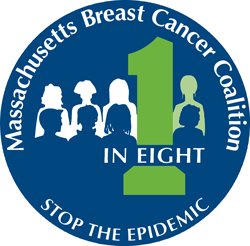Let’s Talk Prevention: Reducing Toxic Exposures is an educational program to increase discussions about environmental exposures between health professionals and patients. The goal of this program to reduce toxic exposures holds implications for reducing the burden of all environmentally-linked diseases, including breast cancer.
The “Discussing Environmental Health with Patients” booklet for health professionals offers advice for assessing a patient’s exposure history and summarizes scientific evidence on the effects of exposure to common chemicals of concern. It provides background information for the patient brochure that describes steps to reduce exposures within the home.
Living a healthy lifestyle through proper diet, exercise, and limiting alcohol and tobacco use is an important start but these steps will not reduce the burden of environmentally-linked diseases. Patients should also make lifestyle changes to reduce exposure to chemicals linked with cancer, birth defects, reproductive problems, and more. This is especially important for pregnant women and children, as some of the most vulnerable segments of our population.
Discussing Exposure with Patients
Many patients may not be aware of the danger posed by some common chemical exposures. To introduce the issue, use the information below and on our Common Chemicals of Concern page. It will be helpful to ask patients specific questions since they may not be aware of the variety of exposure sources.
1. Give patients the brochure; explain the information included and how it is useful for their lifestyle. Asking some of the questions below will provide a sense of each patient’s personal exposure history. Steps and suggestions can and should be tailored to the lifestyle of each patient. When discussing the brochure, ask patients if they have come in contact with this information before. If they have, inquire as to what steps they are already taking to reduce exposure for themselves and their families. Reinforce positive behaviors and encourage patients to continue making healthy changes.
2. Reducing daily exposures may seem unwieldy or overwhelming. Reassure patients that they can start with small changes and do as much as they can. Make sure to emphasize the importance of reducing exposure for pregnant women, infants, and children as a top priority during these critical developmental stages.
3. Follow up at the next visit. Ask if the brochure was helpful, if they have taken any steps to reduce exposure and if they have questions or comments. Provide a new copy of the brochure, if necessary. Again, reinforce positive behaviors and encourage patients to continue making healthy changes.
Questions to Ask
The Institute of Medicine notes three levels sectors of a patient’s environment: home, community, and workplace. It can be helpful to address the three sectors separately to identify potential environmental hazards in each sector of the patient’s environment. If hazards are identified during the initial assessment, additional information can be gathered with questions tailored to each patient’s environmental history. In general, health professionals should ask questions about the frequency and duration of exposures and provide suggestions for safer alternatives and healthier practices (when possible).
Additional Resources
Case Studies in Environmental Medicine (a self-instructional online education program for health professional regarding toxic substances and health from the Agency for Toxic Substances & Disease Registry)
Epidemiology Reviews Database (Silent Spring Institute)
Guidelines on the Prevention of Toxic Exposures: Education and Public Awareness Activities (World Health Organization)
International Agency for Research on Cancer
Mammary Carcinogens Review Database (Silent Spring Institute)
National Institute for Environmental Health Sciences
Pediatric Environmental Health Toolkit (Physicians for Social Responsibility)
Pediatric Environmental Health Training Module (Agency for Toxic Substances & Disease Registry)
Promoting Environmental Health in Communities (Agency for Toxic Substances & Disease Registry)

